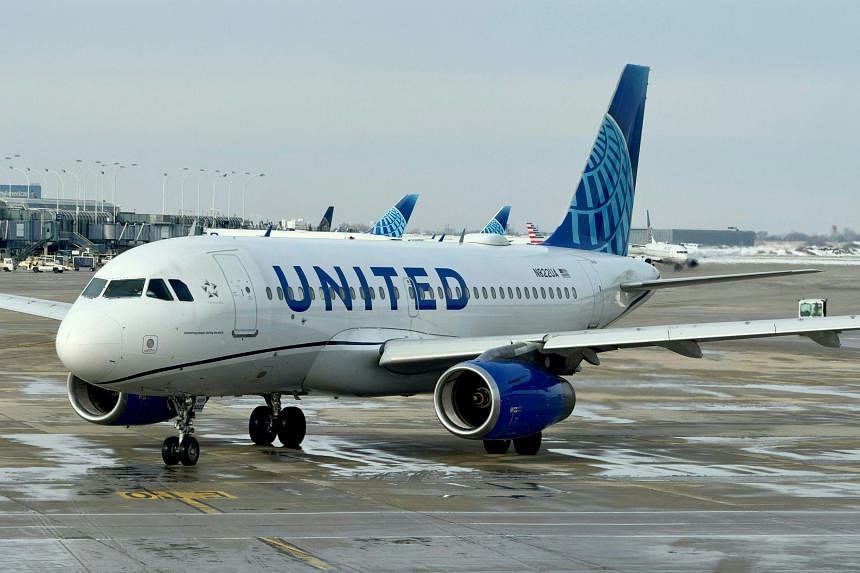NEW YORK - An engine fire sparked by plastic packaging wrap, a tire lost shortly after takeoff and a plane veering off the runway: These are among the eight incidents that have occurred over the past two weeks on flights operated by United Airlines. While no injuries — or worse — have been reported, the mishaps have generated headlines and stoked rising anxiety about aviation safety among federal officials and passengers alike.
All of the incidents happened in the United States, and five involved airplanes made by Boeing, a manufacturer already under intense scrutiny. In January, a door plug blew out of an Alaska Airlines Boeing 737 Max 9 jetliner in mid-flight, forcing the plane to make an emergency landing.
United, one of the world’s largest airlines, flies aircraft manufactured mainly by Boeing and Airbus. In an email United began sending to customers on Monday, the company’s chief executive, Scott Kirby, wrote that while the recent incidents were unrelated, they were “reminders of the importance of safety.”
“I want you to know that these incidents have our attention and have sharpened our focus,” he continued, adding that every case was being reviewed by the airline and would influence its safety training and procedures.Here’s what travelers should know about the latest in airplane woes.
What exactly happened on or to the planes?
Most of the incidents reported in the last two weeks required emergency landings or diversions.
March 4: A Boeing 737-900 departing from George Bush Intercontinental Airport in Houston returned to the airport to make an emergency landing after one of the plane engines ingested and burned plastic wrap.
March 7: A Boeing 777 leaving San Francisco for Osaka, Japan, made an emergency landing at Los Angeles International Airport after the aircraft lost a tire.
March 8: A Boeing 737 Max 8 veered off the runway upon landing at George Bush Airport in Houston and tilted onto the grass.
Later that day, a flight leaving San Francisco for Mexico City was diverted to Los Angeles after the Airbus A320 experienced issues with its hydraulic system.
March 9: An Airbus A320 heading to Salt Lake City turned back to Chicago O’Hare International Airport after it reported maintenance issues.
March 11: A Boeing 777, flying from Sydney, Australia, to San Francisco, turned back after takeoff because the plane had a hydraulic leak.
March 14: An Airbus A320 that departed from Dallas Fort Worth International Airport had a hydraulic leak shortly before it landed in its scheduled destination, San Francisco.
Later that day, a Boeing 737-800 that took off from San Francisco landed at Rogue Valley International Medford Airport in Oregon missing an external panel.
Are the recent issues typical, or cause for concern?
The mishaps were not the result of “systemic problems,” said Robert Sumwalt, a former chairman of the National Transportation Safety Board who now heads a new aviation safety centre at Embry-Riddle Aeronautical University.
“Some of these issues are things that happen occasionally, but often don’t get reported in media,” Mr Sumwalt said, though he emphasised that none were acceptable.
Kyra Dempsey, who writes about aviation accidents in a blog called Admiral Cloudberg, said that United’s recent issues were being “falsely conflated with Boeing’s troubles.”
“While it’s bad luck that United had so many incidents in such a short period, in general such incidents happen frequently around the world and they aren’t on the rise overall,” Ms Dempsey said.
How has United responded?
Mr Kirby’s 270-word message to United customers, including to members of the airline’s frequent flier program, started to be sent on March 18 morning, said Josh Freed, a spokesman for United.
Starting in May, United pilots will have an extra day of in-person training, a change that was already planned before the incidents, Mr Kirby wrote. The airline will also use a “centralised training curriculum for our new hire maintenance technicians” and will dedicate additional resources to the carrier’s supply chain.
What government agencies oversee these issues, and how are they responding?
The Federal Aviation Administration regulates the country’s aviation system and investigates safety incidents on US airlines, while the N.T.S.B. investigates the causes of accidents, collisions and crashes involving planes flown by US carriers, in addition to other accidents involving commercial and mass transit operators. Both agencies have discretion on what they investigate, Mr Sumwalt said.
Currently, the N.T.S.B. is investigating the incident that occurred on March 8 in Houston, when the plane veered off the runway, an agency spokesperson said. The N.T.S.B. is also looking into a Feb 10 Los Angeles-to-Newark flight, operated by United, that experienced severe turbulence, leading to injuries among more than a dozen passengers. (The Boeing 777 landed normally, but the flight was met by medical personnel.)
Safety experts said some issues don’t necessarily rise to the level of an investigation by either agency.
For example, partial loss of some of an airplane’s multiple hydraulics systems is common, said Michael McCormick, an assistant professor at Embry-Riddle Aeronautical University and a former F.A.A. control tower operator. The F.A.A. may or may not get involved for this kind of issue, unless there’s a pattern, Mr Sumwalt said.
The January episode involving the blown door plug aboard the Alaska Airlines jet is under investigation by the N.T.S.B. and the Justice Department. NYTIMES

